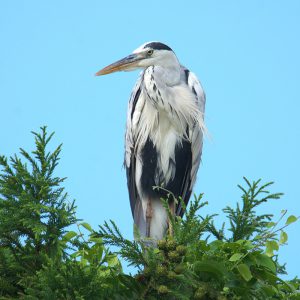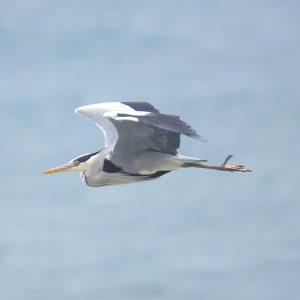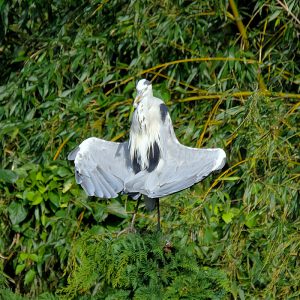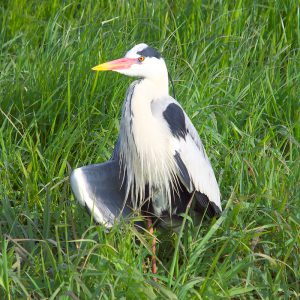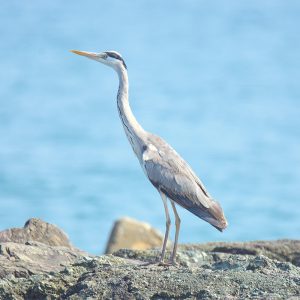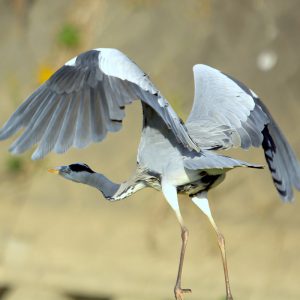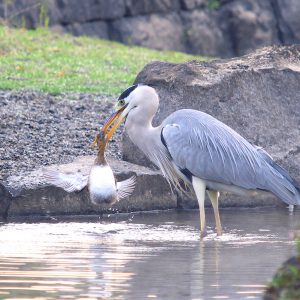むなかたが集まる
電子データベース
電子データベース
アオサギ
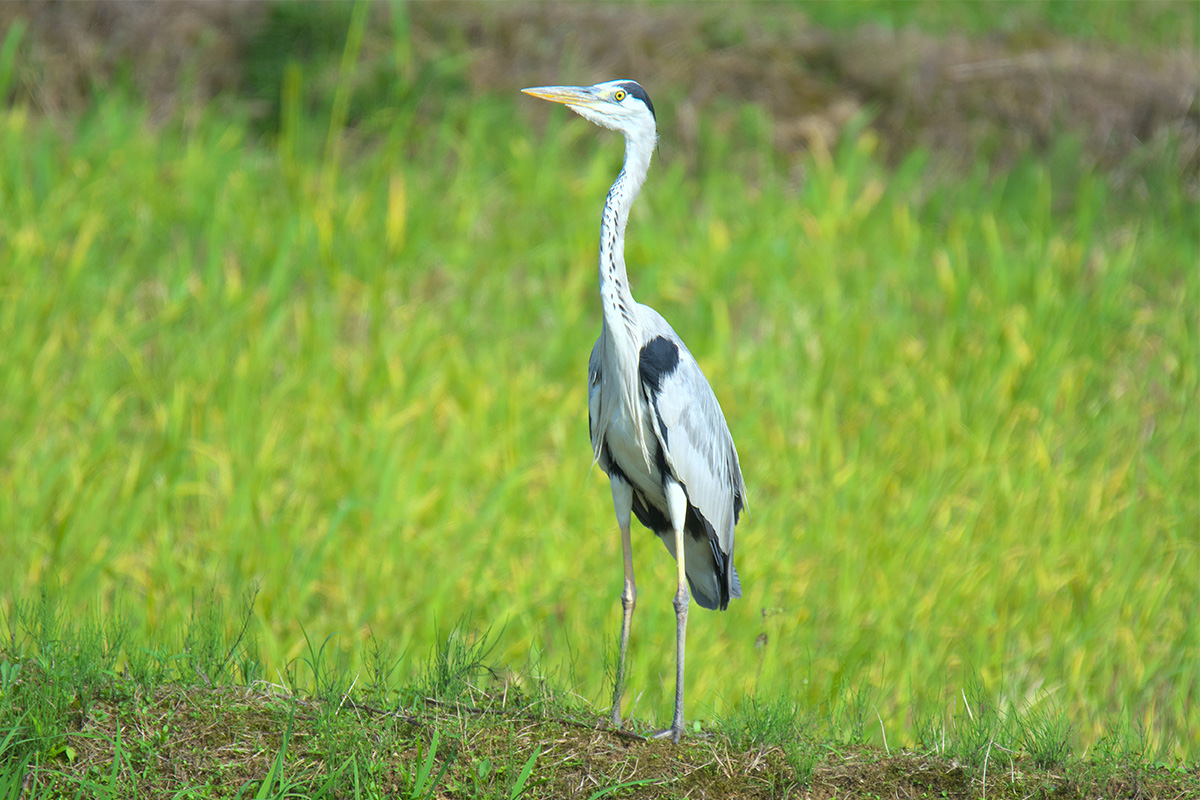
| 種目 | アオサギ (蒼鷺) | 分類 |
ペリカン目 サギ科 アオサギ属 |
学名 | Ardea cicrea | 英名 | Grey Heron |
|---|---|---|---|---|---|---|---|
|
アオサギ (蒼鷺) |
ペリカン目 サギ科 アオサギ属 |
Ardea cicrea | Grey Heron |
宗像市でみられる場所・時期
留鳥であり,一年中,釣川やその支流,溜め池,農耕地など,市内全域の水辺で普通に見ることがで見ることができる。
特徴
全長93cm。雌雄同色。
額から頭頂と顔から前頭は白く,目の上から口頭に黒線があり,後頭には長い冠羽がある。上面は灰色で背と肩羽には灰白色の飾り羽がある。風切,初列雨覆,小翼羽の一部が黒く,その他は灰色である。体下面は白く,胸には黒い縦斑と白い飾り羽がある。嘴と脚は黄褐色で,眼先は黄緑色,光彩は黄色い。
婚姻色では,嘴の基部と足が赤くなり,目先は青紫色になる。
若鳥には冠羽が無く,眼の上の黒帯もぼやけ気味である。
日本で見られるサギ類の中では最大級であり,見間違えることはほとんど無い。初心者には,その大きさから鶴に見間違える人もいる。
習性
河川,池,干潟,農耕地などいろいろなタイプの水辺で見ることができる。他のサギとともに集団で営巣(コロニー)する。現在宗像では吉田付近釣川右岸の樹林で小規模のコロニーを見ることができる。昼夜を問わず活動し,夜間飛びながら「ゴァー」と大きな声で鳴いてるのを聞くことがある。
分布
ユーラシア大陸中部以南とアフリカに分布する。日本では全国で見られるが,北日本では夏鳥である。
その他
体が大きいので,ツルと間違われることがある。
しかし,ツルは,本種より体が大きく,飛ぶときに首を伸ばして飛ぶ。
なお,サギ類は頸を縮めて飛ぶ。参考までに,クロツラヘラサギやヘラサギなどのトキ類も頸を伸ばして飛ぶ。
 はじめに
はじめに お問い合わせ
お問い合わせ